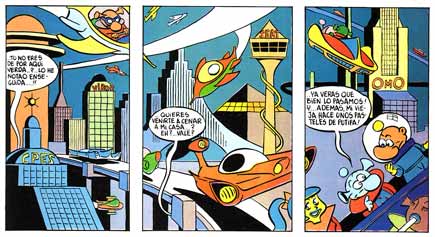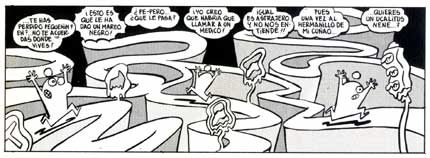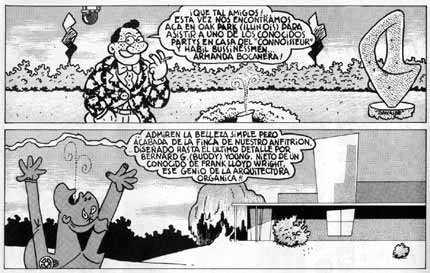Miguel Gallardo is an innovative artist of Spanish comics. He began his career in the late 1970s and had his first success in May 1977 when he co-created 'Makoki' in Disco-Exprés magazine. Makoki was a psychopath who escaped from a mental hospital. In 1979, this character was transferred to the magazines Star and Bésame mucho. The same year, Gallardo became an artist for the El Víbora periodical.
Teaming up with Juan Mediavilla, he continued making innovative comics, featuring such characters as 'Tío Emo', 'El Niñato' and 'El buitre Buitaker'. With their series they developed a style that soon got the humorous name "línea chunga", a purely Spanish comic style. In 1982, when the publisher of El Víbora launched 'Makoki' magazine, Gallardo not only participated as an artist but also as editor of this magazine.
Around the mid-1980s Gallardo's comics showed a new tendency, more related to his other career as an illustrator. His colorful 'Perro Nick' is a good example of this style. He also drew two series written by Ignacio Vidal-Folch: 'Perico Carambola' (which became a daily page in the summer supplement of 'La Vanguardia' in the early 1990s) and 'Roberto España y Manolín' (a parody of 'Roberto Alcázar' classic series in 1994). Miguel Gallardo told the story of Makoki's death in Viñetas magazine in April/ May 1994.
One of Gallardo's most important works is 'María y yo' ('María and I'), an autobiographic story about his autistic daughter, published by Astiberri in 2007. Gallardo tells his story as a visual guide to understand autism. It has been made into a film in 2010. Astiberri has also published 'Un Largo Silencio', a graphic novel about his father's Civil War memories. Miguel Gallardo is a regular contributor to Nosotros somos los muertos, the fanzine edited by Max and Pere Joan.





